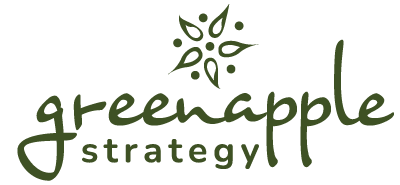Mergers and acquisitions: they’re like a shot of adrenaline for growth, right? New markets, bigger teams, more opportunities. But let’s be real, they also come with their fair share of headaches, especially when it comes to branding. Suddenly, you’ve got two (or more!) different brand identities, values, and messaging floating around, and trying to get them to play nice can feel like herding cats.
Getting the messaging right—both internally and externally—is critical for a smooth transition. Consider these statistics:
- 50%–75% of mergers and acquisitions fail to meet financial expectations, often due to cultural misalignment. (Source).
- 34% of acquired employees leave within the first year post-acquisition. (Source)
At Green Apple Strategy, we’ve helped businesses navigate the complex world of mergers and acquisitions, ensuring their brand remains clear, compelling, and customer-centric. Here are some key takeaways to help you develop a unified brand strategy that resonates both internally and externally.
Developing a Unified Brand Strategy After a Merger or Acquisition
1. Take Stock Before You Take Off: Conduct a Brand Audit
Before merging two brands into one, take time to assess what’s working and what’s not. Conduct a thorough marketing audit of both brands, evaluating their messaging, visual identity, customer perception, and internal culture. Identify overlapping strengths and pinpoint areas where the brands differ significantly. This will help guide decisions about what to keep, update, or remove in the new brand identity.
2. Get Everyone on Board Early: Engage Key Stakeholders
A merger doesn’t just affect customers—it impacts employees, leadership, and investors. Bringing stakeholders into the conversation early ensures alignment and buy-in. Host leadership workshops, gather employee feedback, and communicate transparently about branding changes. This not only creates buy-in but also uncovers valuable insights you might otherwise miss.
3. Craft a Story That Connects: Build a Clear Brand Narrative
Mergers are about more than just logistics—they’re about storytelling. What’s the bigger vision for the newly combined brand? How do the two companies’ histories and values merge into a compelling narrative? A strong brand narrative makes the transition feel intentional rather than transactional, inspiring employees and reassuring customers.
4. Prioritize Internal Brand Alignment
Your employees are your brand’s first ambassadors. If they’re confused about the transition, your customers will be too. Develop an internal communication plan that includes training, talking points, and FAQs. Help employees understand the “why” behind branding decisions so they can confidently represent the company.
5. Be Intentional About Elevating the Customer Experience
Don’t forget the customer during this process. They are the ones who keep the lights on. How will the merger affect their experience? Make sure your brand strategy puts their needs front and center. Clear communication and a seamless transition are key to maintaining customer loyalty.
6. Roll Out the Brand with a Strategic Marketing and PR Plan
Don’t leave your new brand’s debut to chance. A well-executed marketing and PR strategy ensures a successful rollout. Announce the rebrand through an omnichannel approach that includes press releases, social media, email campaigns, and updated website messaging. Highlight the benefits of the transition and reinforce the brand’s new positioning with a strong, unified voice.
7. Embrace Flexibility and Iteration:
A unified brand strategy isn’t a “set it and forget it” kind of deal. Be prepared to adapt and evolve as you gather feedback and learn what resonates with your audience. This means being open to change and willing to iterate on your strategy.
Case Study: Urban Sweat’s Expansion Through Acquisition
In 2024, we partnered with Urban Sweat as they acquired another wellness franchise, adding nine new locations to their portfolio. Our goal was to develop a comprehensive brand messaging strategy that would ensure a smooth transition and elevate Urban Sweat’s national presence.
We began with an Acquisition Marketing Strategy, outlining clear messaging for employees, existing customers, and new audiences. Internal communication played a crucial role in ensuring brand consistency and generating excitement about the expansion.
Next, we developed a multi-state PR strategy to introduce Urban Sweat’s expanded brand to a wider audience. This included a targeted media push across multiple markets.
The results? Green Apple’s efforts secured 339 unique media placements, reaching an audience of over 201 million. Urban Sweat’s acquisition became a standout success story, reinforcing its reputation as a leader in the wellness and recovery industry.
Mergers Are Complex—Your Brand Strategy Doesn’t Have to Be
Mergers and acquisitions are always a complicated undertaking. A well-crafted unified brand strategy ensures that all the work you put into the process isn’t awash with unhappy employees or confused customers.
If you’re facing a merger or acquisition and need help developing a marketing or messaging plan, our team at Green Apple Strategy has the experience and insights you need. Learn more about our approach to strategic planning or contact us to discuss how we can help you create a unified brand that resonates.




